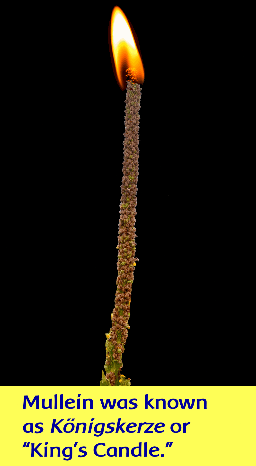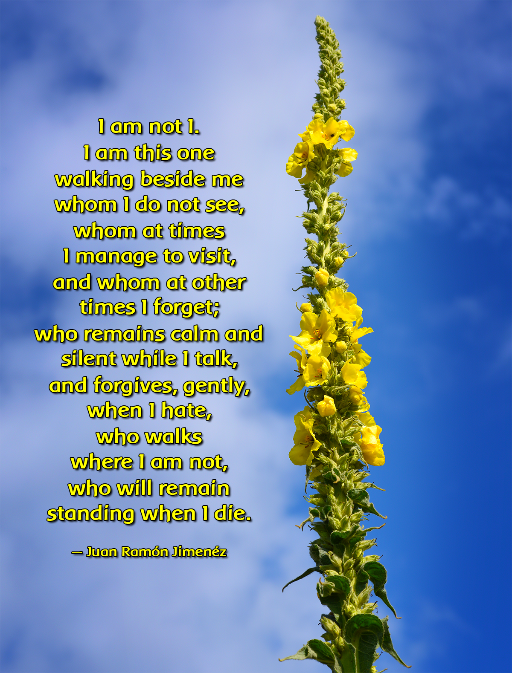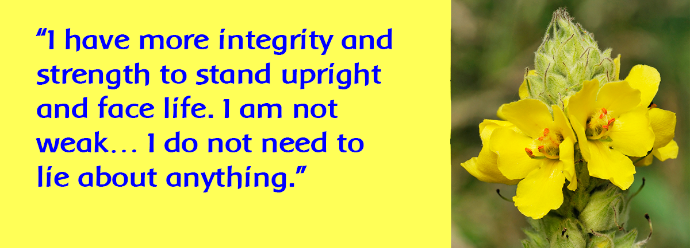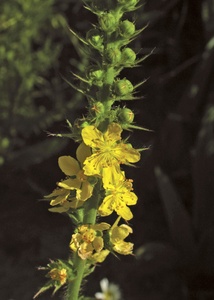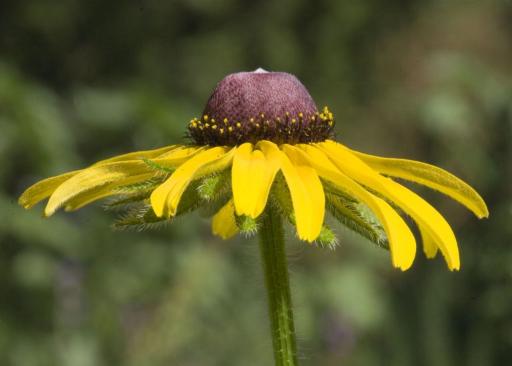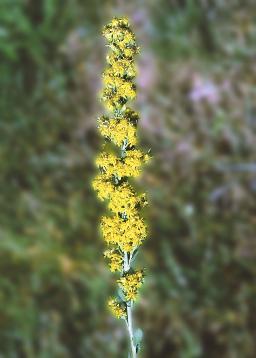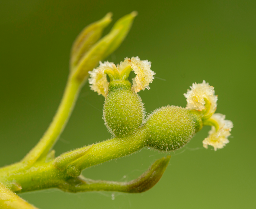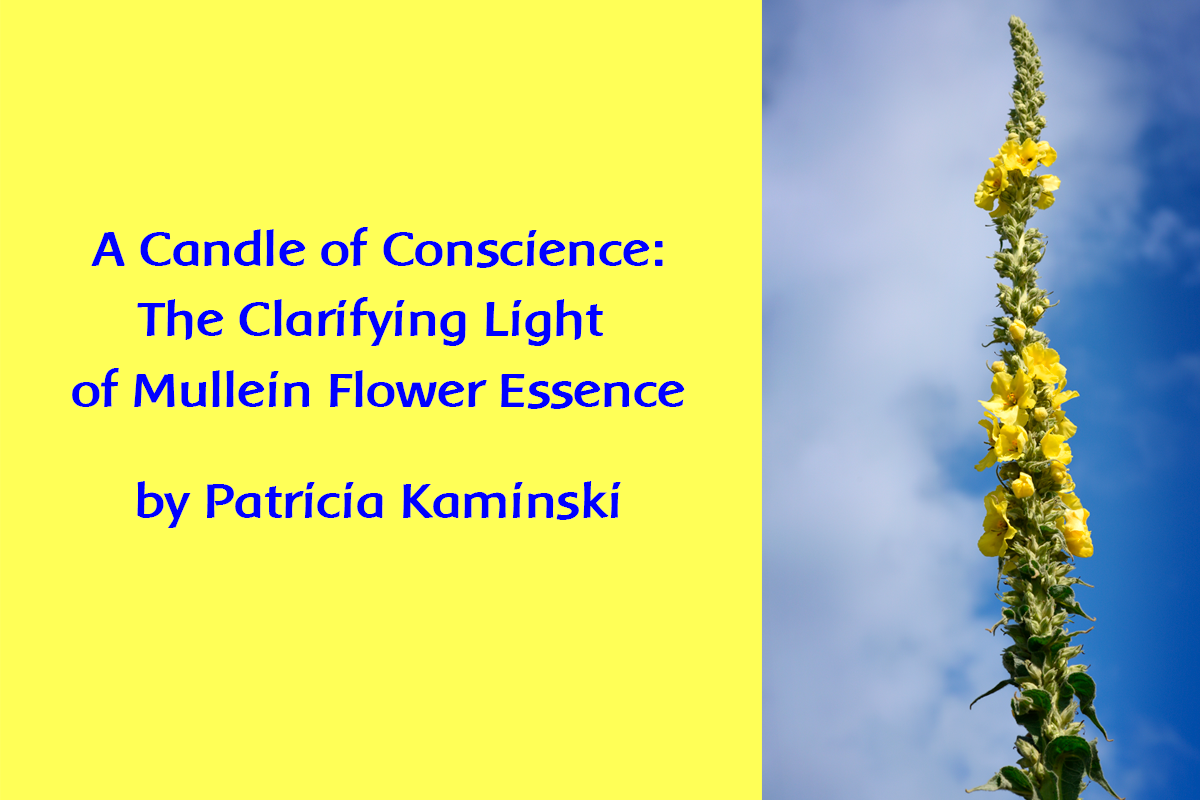
A Candle of Conscience: The Clarifying Light of Mullein Flower Essence
by Patricia Kaminski
Mullein – Enduring Stature and Sun-Soaring Presence
Mullein is a spectacular flower to observe throughout the summer as it towers skyward. Even in autumn, the ascent continues — its growing tips suffused with bright yellow blossoms newly opening each day to greet the sun and eager bees. The botanical name for Mullein is Verbascum Thapsus. It is a biennial that begins with a low rosette of soft silver leaves in its first year, and then in the second year, it sends up a vertical stalk which can be as much as 13 feet in stature. The more common name of Mullein is likely derived from mollis, Latin for soft, referring to the felt-like dew-retentive leaves which are so prominent in its first year of growth.


By contrast, this plant is also known as “wooly” Mullein, referring to the lanceolate leaves that become rougher and more densely covered in small hairs during its vertical progression in the second year. The name of Verbascum, is a corruption of the Latin barbascum derived from the Latin barba, meaning beard, again characterizing the beard-like hairy filaments in the leaves. Its second name of thapsus likely derives from the Greek thapsinos, meaning yellow, describing its abundant bright yellow blossoms. The flowers are so richly endowed with yellow that they impart a golden color to boiling water—an infusion used in the Greco-Roman era to impart a light-filled hue to hair.
The tall inflorescences of yellow flowers on the Mullein are indeed impressive to experience. The higher the Mullein stalks grow, the longer they bloom. Well-developed strong Mullein plants develop not only a single candle-like stalk but also flowering side shoots that create a “candelabra” form. Hundreds of small yellow, 5-petaled flowers are grouped densely on each leafy spike. They bloom progressively throughout the summer and early autumn, growing from the bottom to the top in successive spirals. Each individual flower has a diurnal rhythm, opening before dawn and closing by mid-afternoon.
The rounded fruit capsule splits in half at maturity, each side crammed with tiny six-sided brown seeds with wavy ridges and deep grooves. Individual plants produce 200-300 seed capsules, each containing 500-800 seeds, meaning that approximately 100,000‑240,000 seeds are produced in a single plant! These seeds are food for many birds, squirrels and other animals, but if they find a home in the soil, they can maintain their vitality for decades, with some seeds shown to have retained their potency for a century or more.
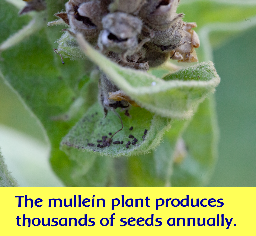

To install this Web App in your iPhone/iPad press ![]() and then Add to Home Screen.
and then Add to Home Screen.
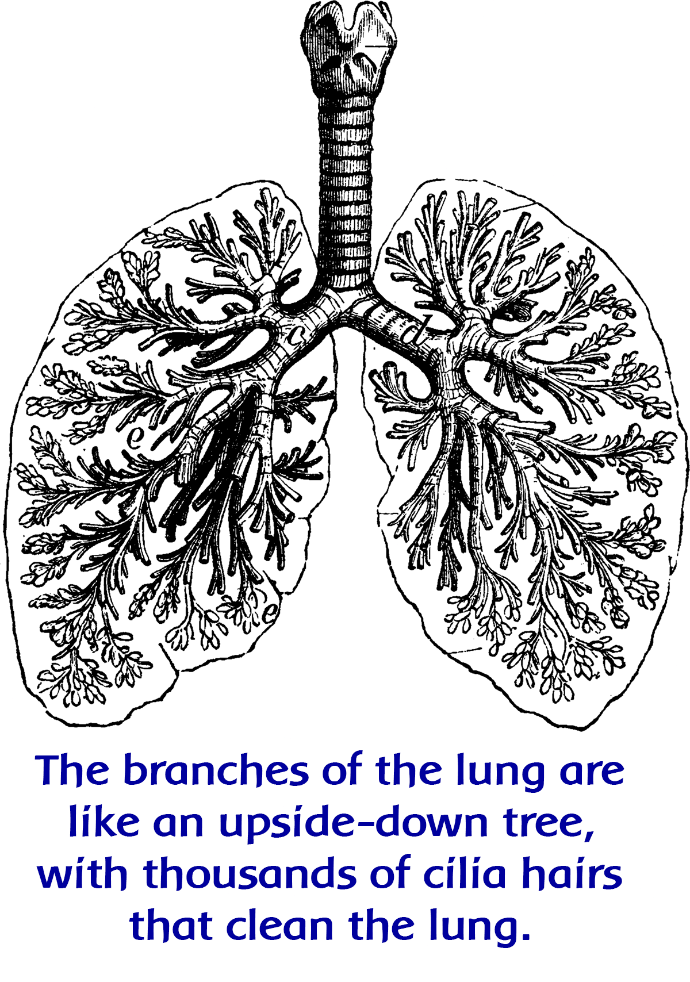
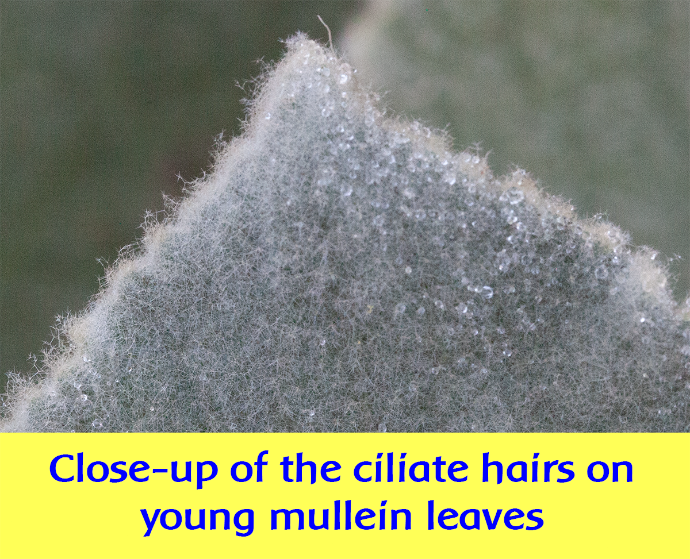
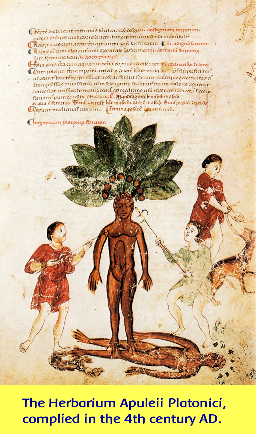
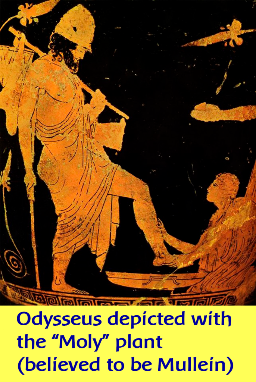 With the help of Mullein, Odysseus prevails against Circe, by coming into awareness of his I-consciousness. In this way, he controls the “wild beasts” of the lower astral realms, with their unbridled desires and passions. This aspect of consciousness in which the “I-Self”—with its vertical axis of alignment in the spine—can be termed “conscience.” By conscience, one refers to the Saturnine aspect of consciousness that awakens to its own karma and responsibility, becoming a witness to the Self. By virtue of this internal power of objective Self-awareness, one is able to subdue the impurities arising from egotistic desire and dishonest representations of the Self to others.
With the help of Mullein, Odysseus prevails against Circe, by coming into awareness of his I-consciousness. In this way, he controls the “wild beasts” of the lower astral realms, with their unbridled desires and passions. This aspect of consciousness in which the “I-Self”—with its vertical axis of alignment in the spine—can be termed “conscience.” By conscience, one refers to the Saturnine aspect of consciousness that awakens to its own karma and responsibility, becoming a witness to the Self. By virtue of this internal power of objective Self-awareness, one is able to subdue the impurities arising from egotistic desire and dishonest representations of the Self to others. The Greek period of human evolution was an important turning point, in which the higher spiritual world increasingly refrained from entering directly into the consciousness of human beings, leaving the human being more free and self-directed. This theme of being challenged and awakened is a story well-told in the journeys of individualities like Odysseus in the Odyssey.
The Greek period of human evolution was an important turning point, in which the higher spiritual world increasingly refrained from entering directly into the consciousness of human beings, leaving the human being more free and self-directed. This theme of being challenged and awakened is a story well-told in the journeys of individualities like Odysseus in the Odyssey. 